Butler Nephew And Co
Bohème Wines
Taylor Ridge Vineyard Chardonnay 2014
medium golden yellow; muted, lemon zest, wet stone; saline, stone fruit; medium bodied, good acid backbone, 14.1% ABV; sourced from vineyard on bluff 5 miles from Pacific Ocean, whole cluster pressed and fermented in seasoned French oak, made by owner/winemaker Kurt Beitler, grandson of Charlie Wagner and nephew of Chuck Wagner co-founders of Caymus Vineyards; $45 — 6 years ago
St. Francis Winery
Sonoma County Cabernet Sauvignon 2015
Thanksgiving with Butler family — 7 years ago
Krug
Brut Rosé Champagne Blend
There are certain occasions that call for Krug Rosé. So, HBTM! The bottle was corked in the summer of 2014. It’s a blend of 45 reserve wines with the oldest being from 2007 and the youngest 2002. This is why I think Champagne Makers are some of the most talented people making wine. They are constantly blending up to 100 plus wines to bring that bottle to bottle and year to year branded flavor of consistency. On the nose; red & pink spring flowers, cherries, strawberries, watermelon, black cherry, black raspberries, notes of blood orange citrus, baked bread, soft volcanic mineral and elegant chalkiness. The palate is always ridiculously delicate. Micro bubbles, silky rich texture with beautiful soft acidity. The palate fruits are similar to the nose; rich & ripe cherries, strawberries watermelon, black cherry, black raspberries, notes of blood orange citrus with hints of marmalade. Red & pink spring flowers, baguette crust, soft powdery minerals that give the palate a slight sting and super powdery chalkiness done just right. The finish is beautifully rich, textured, revealing itself in layers and lasts minutes. Photos of; Founder Joseph Krug, House of Krug, Winemaker Eric Lebel, Krug’s Clos du Mesnil, a small plot of 1.85 hectares of Chardonnay...one of the world’s greatest vineyards and their salon tasting room. Producer history & notes...Krug was founded by Joseph Krug in 1853. They are based in Reims, the main city in France’s Champagne region. It is one of the famous Champagne houses that formed part of the Grande Marques. Today the house is majority owned by the multinational conglomerate LVMH, which owns Moët Hennessy, Louis Vuitton S.A. and who’s wine producer portfolio includes other well known wine brands such as; Moët & Chandon, Veuve Clicquot, Château d'Yquem, Ruinart & Cheval Blanc, Dom Perignon and many others. Despite LVMH's majority ownership, the family is still actively involved in all the key decisions of the house but does not manage the day-to-day operations. Joseph Krug was born Johann-Joseph Krug, a butcher’s son, in Mainz, on the Rhine in 1800 when the city was part of the Napoleonic Empire. Having dispensed with the name Johann, he left Mainz in 1824 and in 1834 moved on to Paris. Germans were in demand in France as accountants and bookkeepers. So, Joseph joined Champagne Jacquesson in Châlons-sur-Marne. He spent eight years with Jacquesson. His work took him beyond accountancy. He went around Europe testing the market and assessing criticism from wine sellers and customers. He learned about composition and taste so that by 1840 he already seemed to have been blending Champagne for at least one other house. In 1841, he married Emma-Anne Jaunay. The daughter of a French hotelier based in London’s Leicester Square. The following year their son Paul Krug was born. In 1842 he moved to Reims and following a year later, Krug et Cie was founded with his partner, Hyppolite de Vivès. Joseph was fluent in French, English and German and even spoke some Russian, putting the company in position to exploit key overseas markets. Joseph died in 1866 and was succeeded by his son Paul Krug, who had been trained by his father to takeover. Joseph under the supervision of Paul, Krug was established as a Grande Marque. By the 1880s the prestige of Krug was acknowledged in the United Kingdom and became the primary overseas market for Champagne. In 1866, the House moved into Rue Coquebert, in Reims as it remains. After Paul’s death in 1910, he was succeeded by his son, Joseph Krug II. However, during World War I Joseph II was taken prisoner and his wife Jeanne played a key role in the House at a time when the Western Front divided the region between the Allies and the Germans. After the war, Joseph II’s slow recovery led to his nephew Jean Seydoux becoming joint manager in 1924. In that decade, the Krug 1926 and 1928 vintages were created, which have been considered by critics to be amongst the greatest Champagnes. Lawyer and wine writer Maurice Healey declared “Krug” the king of all Champagnes. Further, “that the 1928 Krug was the best wine made in the present century.” By the mid-1930s, Paul Krug II, the son of Joseph II, was active in the business and would become head of the House from 1959 to 1977. His father died in 1967, by which time he was, according to Patrick Forbes, “one of the most popular and respected figures in the Champagne district.” In 1962 Henri Krug, the son of Paul II, joined the management, as did his brother Remi three years later. Their arrival was followed by a series of innovations, including extensions in the range of Champagnes. In 1979, for the first time, a graduate winemaker joined the House. In January 1999, the House became part of LVMH and by 2007, the brothers, while remaining on the tasting committee, had stepped down from day-to-day responsibilities. In 2009 Olivier Krug, the son of Henri, became House Director. At harvest, Krug grapes are pressed close to their plots with the first juice kept for 24 hours in a vat prepared for the fermentation stage. The pressing from each plot is vinified separately. A pressing contains 4,000 kilos of grapes and yields 20.5 hectolitres of first juice (cuvée), which is poured into twelve oak casks chosen at random. Once fermentation is complete, the eleventh and twelfth casks are used to top up the other ten casks in order to protect the new wines from oxidation. For fifteen days, each cask is topped up with wine from the same plot. Krug uses small 205 liter oak casks tailor-made from trees that are more than two centuries old in the forests of Hautes Futaies in Central France. The average age of Krug oak casks is 20 years. They are retired after approximately 40 years of use. The wines remain in the casks for several weeks. During this period, clarification occurs naturally from the cool temperature of the cellar given the coming winter, as does a micro-oxygenation process from the use of natural containers, making the wine more resistant to oxygen over time. Finally, between December and January, the wine is drawn off into small stainless-steel vats. From here, depending on the decisions of Krug’s tasting committee, the wines will either contribute to that year’s assemblage or be stored in steel vats in the House’s library of 150 reserve wines to be used in the blend of a future Krug Grande Cuvée and or Krug Rosé. — 8 years ago
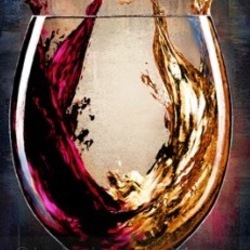

Butler Pond
California Merlot
Smooth finish. Reminds us of one of our favorite local wines! — 8 years ago
Château Roudier
Montagne-Saint-Émilion Red Bordeaux Blend 2012
It is nice. Has a warm aftertaste, little bland in general though. Almost have hit all the Trader Joe's French reds... price time. Also Adisa's nephew is Rae Smurmurd — 8 years ago
The Wine Butler
I Wish I Was A Ninja Red Blend
Frothy, pear unusual cool sparkling — 10 years ago
Reversanti
Barolo Nebbiolo
Light, crisp and delicious! Enjoying this with my sisters, brother-in-law, nephew and niece at North Italia in Phoenix. — 10 years ago
Shinas Estate
Sweet Justice Shinas Estate Moscato 2016

Ridge Vineyards
Geyserville Sonoma County Zinfandel Blend 2015
Tom and Dyann had the 2015 March 2019...our nephew told us to age it...we held it for two years! This was a spectacular zin! — 7 years ago
Château Lafite Rothschild
Carruades de Lafite Pauillac Red Bordeaux Blend 2003
On the nose, ripe; blackberries, sweet & sour dark cherries, cooked cherries & strawberries & hues of blueberries. Black tea, cola, soft baking spices; vanilla, light clove & cinnamon. Crushed rocks, stones, limestone, turned, moist black earth, tobacco leaf, saddle-wood, soft leather, dry & fresh dark red florals.
The body is medium edging toward full. The tannins pretty well resolved. The ripe fruits show the hot, ripe vintage. Blackberries, sweet & sour dark cherries, cooked cherries & strawberries & hues of blueberries black tea, cola, soft baking spices; vanilla, light clove & cinnamon. Crushed rocks, stones, limestone, tobacco with ash, some graphite, soft medium dark spice, turned, forest floor, powdery but edgy minerals, saddle-wood, soft leather, dry & fresh dark red florals with some violets on the finish.
This showed better with Ribeye. The Ribeye brought out a fuller, richer wine with even more complexity. 9.35-9.4 with the Ribeye. It just missed 9.2 on its own. It’s big brother the 03 “Lafite” is 💯 point Parker wine.
Photos of; Chateau Lafite, their oak vat fermenters, Estate wine and their magnificent barrel room.
Interesting history and producers notes...Lafite Rothschild has a long and interesting history dating back to 1234, even though the property was not in the Bordeaux wine business at that time.
It is has been largely believed that vines were already planted on their terroir. The owner of the estate at the time, Gombaud de Lafite left his mark, his name. Almost 1,000 years after he owned it, the Chateau is still named after him! The vines were probably in existence at Lafite for over a century, it was not until around 1680, the majority of vineyards of what we know of as Lafite Rothschild today were created. This is because on the 1680 estate manifest, there are six mentions of their Bordeaux vineyards. Jacques de Segur, earns credit for cultivating the vineyard as I wrote in my Colon Segur post last weekend. In 1695, Alexandre de Segur married Marie-Therese de Clauzel, heiress to Chateau Latour. So to dovetail that write up, within a generation, the Segur family married into two of the greatest Bordeaux vineyards, Chateau Lafite and Chateau Latour! When their son, Nicolas-Alexandre passed away, Chateau Lafite and Chateau Latour were separated.
In 1797, Chateau Lafite was sold again. In the deed of sale, Chateau Lafite was described as a Premier Cru of Medoc. This is one of the earliest mentions of what we know of today as Lafite Rothschild producing wines of what would later be classified as an 1855 First Growth.
At that time, of Lafite were managed by the Goudal family. The Goudal family were wine historians and were able to read accurate records and details of the viticulture and marketing plans for Chateau Lafite in the estates formative years. The Goudal family gets the credit for creating the cellar and saving many of the oldest bottles that remain in the cold, dark cellars, including their oldest bottle, the 1797 Lafite!
The start of the famous Rothschild family begins in 1744, with the birth of Amschel Meyer. Amschel Meyer began creating his fortune while working as a merchant at “Zum Roten Schild,” which eventually became the family name of Rothschild.
In 1798 his sons were sent to various cities to create their fortunes. Needless to say, his sons all prospered as did their children in turn. This eventually led to them wanting to own a Chateau in Bordeaux. So in 1853, Baron Nathaniel de Rothschild, an English member of the Rothschild family, purchased Chateau Brane-Mouton. As was the custom of the day, the new owner renamed it using his name and Chateau Mouton Rothschild was born.
This was followed in 1868, when James Rothschild, another member of the family purchased Chateau Lafite, which was now a coveted First Growth.
On 8 August, 1868, Baron James d’Rothschild purchased Chateau Lafite, which was sold at a public auction in Paris. It’s assumed, he bought the property for family competitive reasons looking to one up his brother, the owner of Mouton Rothschild. At that time, Mouton Rothschild was only a Second Growth at the time. But, that does not paint the entire picture. The 1855 Classification had not taken on the importance associated with it the we see it today. Plus, buying Lafite was a reasonable investment as the vineyard sold for about 8 times its earning potential.
The actual Chateau is one of the older structures in Bordeaux, as part of the building dates back to the later part of the 16th century. In 1868, the vineyard took up 135 hectares, of which 74 hectares were cultivated with vines. Production was much smaller in those days than it is today as it was between 4,000 and 5,000 cases.
Just three months after the purchase, Baron James d’Rothschild passed away and Chateau Lafite Rothschild became the joint property of his three sons; Alphonse Rothschild, Gustave Rothschild & Edmond Rothschild. Since 1868, Chateau Lafite Rothschild has remained in the hands of the of Rothschild family. The new owners renamed the estate Chateau Lafite Rothschild.
Jumping ahead to the modern age, in 1962, the Rothschild family added to their holdings when they purchased Chateau Duhart-Milon, a Fourth Growth vineyard also located in Pauillac. It was owned by the Casteja family for more than a century, Chateau Duhart Milon suffered from neglect and was in a awful condition. By the time Duhart Milon was obtained by the Rothschild family, the vineyard was down to only 17 hectare which required extensive renovations.
Baron Eric Rothschild, nephew of Baron Elie Rothschild, took over the management of Lafite Rothschild in 1974. Baron Eric Rothschild was part of the fifth Rothschild generation to inherit Chateau Lafite Rothschild. In 1984, the Rothschild family added to their holdings in Bordeaux with the purchase of Chateau Rieussec in Sauternes.
1987 was a difficult vintage, but because that was the year Lafite celebrated the inauguration of their wine new cellar, they had a lot to be excited about.
The new cellars were built under the supervision of Catalan architect Ricartdo Bofill, is both underground and circular, with a vault supported by 16 columns, giving the structure a majestic architectural style. The cellar holds 2,200 barrels, which is about 55,000 cases of wine. The construction took two years to finish and was completed in 1988.
Domaines Baron Rothschild became one of the first Bordeaux properties to invest in South America when they purchased Vina Los Vascos from a Chilean family. The owners of Lafite Rothschild continued expanding their holdings with the purchase of Chateau lEvangile in Pomerol from the Ducasse family, who owned the property for almost 100 years.
The wine making at Chateau Lafite Rothschild was managed by Charles Chevallier, who began his position in 1994. Charles Chevallier was replaced by Eric Kohler in January 2016. 2017 saw another change at the estate when Jean Guillaume Prats replaced Christopher Salin as the President of Domaines Baron Rothschild.
Perhaps, it’s the most refined of the First Growth. The wine, like all First Growth’s takes decades to mature. It has remarkable staying powers. Bottles of 1870 Lafite Rothschild discovered in the Glamis castle remain profound at more than 140 years of age! It is consider by many Master Sommeliers to be the best wine in the world.
Chateau Lafite Rothschild is one of the earliest major Bordeaux estates to bottle their own wine. In 1890, they bottled a large portion of the wine and again in 1906. Part of the estate bottling was due to requests from Negociants who were willing to pay more for Chateau bottled wines. Also, bottling was primarily done to combat piracy. At the time, it was known that merchants in some countries, like Russia were bottling cheap wine and placing labels from Lafite Rothschild on the bottles. The Koch’s famous Jefferson bottles were not the first attempt at counterfeiting.
Prior to 1996, some would say the property had its share of ups and downs. The 1960’s and 1970’s were not great for Chateau Lafite Rothschild. But since 1996, Lafite Rothschild has been producing some of the best wine in their history!
Sadly, only the wealthy can afford to purchase it. Price aside, there is no denying the level of quality. In 2003 Lafite Rothschild produced a wine that is possibly unequaled by the estate at any time in their long history. Hence, my purchase of their 03 second wine. 2009, 2010 and 2016 are not far behind.
Starting in about 2008, Lafite Rothschild became the most collectible wine from Bordeaux. Prices exploded due to demand from China as Chinese businessmen bought them as gifts or bribes depending on you look at it.
The reason this started was Lafite Rothschild paid for product placement on the number one rated Chinese soap opera on television. Characters in that show were pictured enjoying life with Lafite Rothschild and since then demand went through the roof as did priced.
However, Issac Newton had it right when he declared “What goes up, must come down.” Prices for Lafite Rothschild plummeted after 2011. By the difficult 2013, prices were finally starting to hold firm, but many of the vintages that were setting price records on a daily basis had lost close to 50% of their value.
Starting with the 2012 vintage, Chateau Lafite Rothschild began instituting anti-counterfeiting measures. From 2012 forward, to help fight, rampant counterfeiting, the estate places a seal of authenticity on the capsules of both Lafite Rothschild and Carruades de Lafite. The seal features a unique, numbered code that can be checked on their website, to verify if the wine is real.
The 112 hectare vineyard of Chateau Lafite Rothschild is planted to 70% Cabernet Sauvignon, 25% Merlot, 3% Cabernet Franc and 2% Petit Verdot. This shows a slight change in the vineyard.
While Cabernet Sauvignon remained at 70%, today there is slightly more Merlot, less Cabernet Franc and the Petit Verdot has been added since the mid 1990’s.
Located in the far north of the Pauillac appellation, only the small, Jalle de Breuil stream separates the vineyards from St. Estephe. You could divide the vineyards of Chateau Lafite Rothschild into three sections with 100 separate parcels in all. The estate has close to 50 hectares of vines located close to the Chateau, on both sides of the D2, which offers gentle rises in elevations of up to 27 meters. They also have about 50 hectares vines planted on the plateau in the Carruades sector, where they have two blocks of vines, one of which is inside the vineyard of Chateau Mouton Rothschild. It is interesting to note that even though the parcels in the Carruades sector give their name to the second wine of the estate, those vines are almost always placed in the Grand Vin.
There are also vines adjacent to, and interspersed with the vineyards of Chateau Duhart Milon. The property also consists of a smaller, 4.5 hectare parcel of vines located in the Saint Estephe appellation, “La Caillava”. The vines in St. Estephe are situated not that far from Cos d Estournel, which are located on a larger a parcel known as Blanquet. The vines in Saint Estephe are allowed to be placed into the wine of Chateau Lafite Rothschild because those vines were used to produce Lafite in 1885, at the time of the classification. The vineyards are close to their famous neighbor Mouton Rothschild.
Located just south of the Chateau, the best terroir of Lafite Rothschild has a thick layer of gravel with sand, clay, marl and limestone in the soils with rolling, gravel slopes. The gravel can be as deep as 4 meters in some parcels.
It is important to note that even though their vineyards are in the far north of Pauillac, most of the soil is pure gravel, rocks and stones. With more than 50% of the soil consisting of gravel, that is a large part of the reason Lafite Rothschild has such elegant, feminine textures and that coveted sensation of minerality.
On average, the vines are close to 40 years of age. However, Chateau Lafite Rothschild has much older vines. In fact, they have some vines that are more than 100 years of age planted in the La Graviere section. That small parcel of Merlot vines dates back to 1886. Less than 1% of the vines are that old.
Additionally, they have a small section of Cabernet Sauvignon that dates back to 1922! Other old vines range from 50 to 90 years of age! They also maintain some of the oldest Petit Verdot vines in the Medoc that was planted in the early 1930’s.
At Chateau Lafite Rothschild, between 1% to 1.5% of the vineyard is replanted every year. Vines less than 20 years of age are never included in the Grand Vin.
The vineyard of Chateau Lafite Rothschild is planted to a vine density that ranges from 7,500 to 8,500 vines per hectare. Only organic fertilizers are used in the vineyards of Lafite Rothschild.
During harvest, the goal is not to pick at the maximum level of ripeness. Instead, they are seeking a blend of grapes at differing levels of maturity, which gives the wine its unique textures, freshness, aromatic complexities and elegant sensations.
Lafite Rothschild is the largest of the First Growth vineyards with close to 112 hectares of vines. A large portion of the estate is taken up with stunningly, beautiful landscaping, lakes, trees and parkland.
At one point in time, Chateau Lafite Rothschild produced a dry white, Bordeaux wine that was sold as Vin de Chateau Lafite. The wine was produced from a large percentage of Semillon, blended with a small amount of Sauvignon Blanc. The last vintage for their white wine was 1960. The wine was sold as a generic AOC Bordeaux blanc with a simple, scripted label, black and white label.
Lafite vinification takes place in 66 vats that are a combination of 29 wood vats, 20 stainless steel tanks and 17 concrete vats that range in size from as small as 45 hectoliters up to 123 hectoliters in the concrete and as large as 270 hectoliters for the wood. The wide range of vat sizes coupled with different materials allow Chateau Lafite Rothschild to vinify depending on the needs of each specific parcel and grape variety. The stainless steel tanks and oak vats are used for Cabernet Sauvignon. The Merlot is vinified in the concrete tanks. Malolactic fermentation occurs in smaller, stainless steel tanks that vary in size from 25 hectoliters up to 60 hectoliters. At this point, Chateau Lafite Rothschild does not yet use gravity to move the fruit and juice in the cellar. It’s a good bet that a remodel is coming soon.
The average annual production of Chateau Lafite Rothschild ranges from 15,000 to 20,000 cases of wine per year, depending on the vintage. They of course make this second wine, Carruades de Lafite, which due to the name and association with the Grand Cru, has also become extremely collectible. Carruades de Lafite takes its name from a specific section of their vineyard that is located near Mouton Rothschild. Carruades is actually one of the older second wines in Bordeaux, as it was first produced in the mid 1850’s. About 100 years later during the mid 1960s, the estate reintroduced their second wine naming it Moulin de Carruades. The name was changed again in the 1980’s to Carruades de Lafite.
There is also a third wine which is sold as an AOC Pauillac that is produced from declassified fruit from Lafite Rothschild and Duhart-Milon.
The blend for Chateau Lafite Rothschild changes with each vintage depending on the character and quality of the vintage. Generally speaking, the amount of Cabernet Sauvignon in the blend ranges from 80% to 95%. Merlot is usually 5% to 20%. Cabernet Franc and Petit Verdot usually varies from 0 to 5%.
— 7 years ago

Butler Hill
Willamette Valley Pinot Noir 2017
Amazing wine. Beautiful notes of ripe orchard fruits - Pear, Apricots and Apple hitting the nose. Lightly colored but good range for a white. Taste is fresh pear and apricot, with a hint of green apple. I can’t wait to drink again. — 6 years ago
Butler Nephew and Co
10 Year Old Port Blend
Hint of caramel/tawnyness to it. Very good. — 7 years ago
Bruni
Poggio d'Elsa Maremma Toscana Cabernet Sauvignon Sangiovese
Very enjoyable blend recommended by our nephew — 7 years ago

Venge Vineyards
Silencieux Napa Valley Cabernet Sauvignon 2015
Venge is not the only new addition to our house lineup. Not even the house white (term shamelessly jacked from TheSkip) is cutting it for Olivier!
Welcome to this wonderful world, nephew! 🍼 — 8 years ago

The Prisoner Wine Company
The Prisoner Napa Valley Zinfandel Blend 2012
My favorite wine. Deep, bold, fruity, gorgeous red. Everything a wine should be. Drank this a few months ago to celebrate a nephew being born. Second bottle I’ve had, first was a 2015 also excellent. — 8 years ago
Domaine Louis Michel
Montmain Chablis 1er Cru Chardonnay 2014
The 14 Chablis are really good. This Louis Michel is no different. An excellent example of little intervention of good fruit. This producer uses no oak; which I really appreciate. After you start to appreciate good Burgundy, CA Chardonnays aren't that interesting. Not that I don't ever drink or enjoy some CA Chardonnay producers, I just prefer the cooler climate Chardonnays that don't use new oak. This 14 was clean through and through. Bright citrus, peach, touch of green apple, soft minerality, touch of saline, creamy texture and beautiful round acidity and ripe, elegant finish. Photos of, Louis Michel vineyard, vineyard heat sources to protect the vine buds during their sometimes difficult Spring weather/frosts, Guillaume Michel (Owner/Winemaker) and their Domaine. Producer notes and history...It was largely believed that Michel family had only been cultivating Chablis since 1850. More on that in a bit. The winery is situated right in the heart of the village with 25 hectares spread over the very first slopes that were discovered by Cistercian monks in the 11th century. 40 years ago, the family decided to stop making the wine in wooden barrels, preferring to create clean, pure and precise Chablis without adding artificial woody tastes. I've said it more than once and I'll say it again, if you have good white grapes, strong wood use only covers up good fruit flavor or hides mistakes either in the vineyard or cellar, baring a stylistic choice. Through this philosophy, combined with the limited yields inspired by organic wine-growing techniques, the Domaine has developed a worldwide reputation for fine wine-making in stainless steel tanks. Today, the Domaine is managed by Jean-Loup Michel and his nephew, Guillaume Michel, who is continuing the family tradition. The importance of their work in the vineyards cannot be overstated. Guillaume Michel is a firm believer in the philosophy that if you do a good job in the vineyard, 90 per cent of the work is done when the grapes arrive at the winery. This statement could not be more true in my opinion. It his grandfather who started the philosophy, Guillaume has only continued it and evolved it with modern changes equipment etc.. It’s a matter of preserving the authenticity of each terroir...working with very pure and clean wines. They understand and like to work differences in terroir. Making it very important to have the same vinification for all the different terroirs. It is important to have an aromatically neutral vinification. Up until recently it was believed that the winemaking history of the family began in 1850, but thanks to Guillaume’s mother and her genealogical pursuits the date has been moved back to at least 1640. Around that time a winemaker from nearby Tonnerre settled in Chablis, marking the beginning of the families venture in Chablis. Domaine Louis Michel covers a total of 25 hectares. A very large part (15 hectares) is the domaine’s premier crus. In addition to that there is two hectares of Petit Chablis vines, six hectares of village Chablis and two hectares of grand crus. Vaudesír is the families biggest grand crus. Vaudesír is interesting because it is actually a valley. One side facing south, very hot, producing concentrated and powerful wines. In Grenouilles, Domaine Louis Michel has half a hectare at the top of the slope. This nine hectare grand cru is just over 7 hectares and is owned by the cooperative La Chablisienne. Vaudesír and Grenouilles are quite similar in terms of soil. Vaudesír has a bit more of clay. Les Clos, their third grand cru, is very rocky. Les Clos is the typical Kimmeridgian soil of Chablis. If you're like me and enjoy your white wine with good clean fruit rather than with oak or too much oak but haven't tried Louis Michel wines, pick up a bottle. I think you'll fall in love with the style and the value as many are under $30.
— 8 years ago
Steinbeck
Paso Robles Cabernet Sauvignon 2011
May 28,2016 Sampled 2011 at wine tasting at the Village Grind with Kathie and nephew,Greg. Bottle with antipasta salad tonight. EXCELLENT! — 9 years ago
Viña von Siebenthal
Reserva Carménère 2010
Taking a visit to Mauro's. It just keeps getting better. @Lizzy Butler — 10 years ago



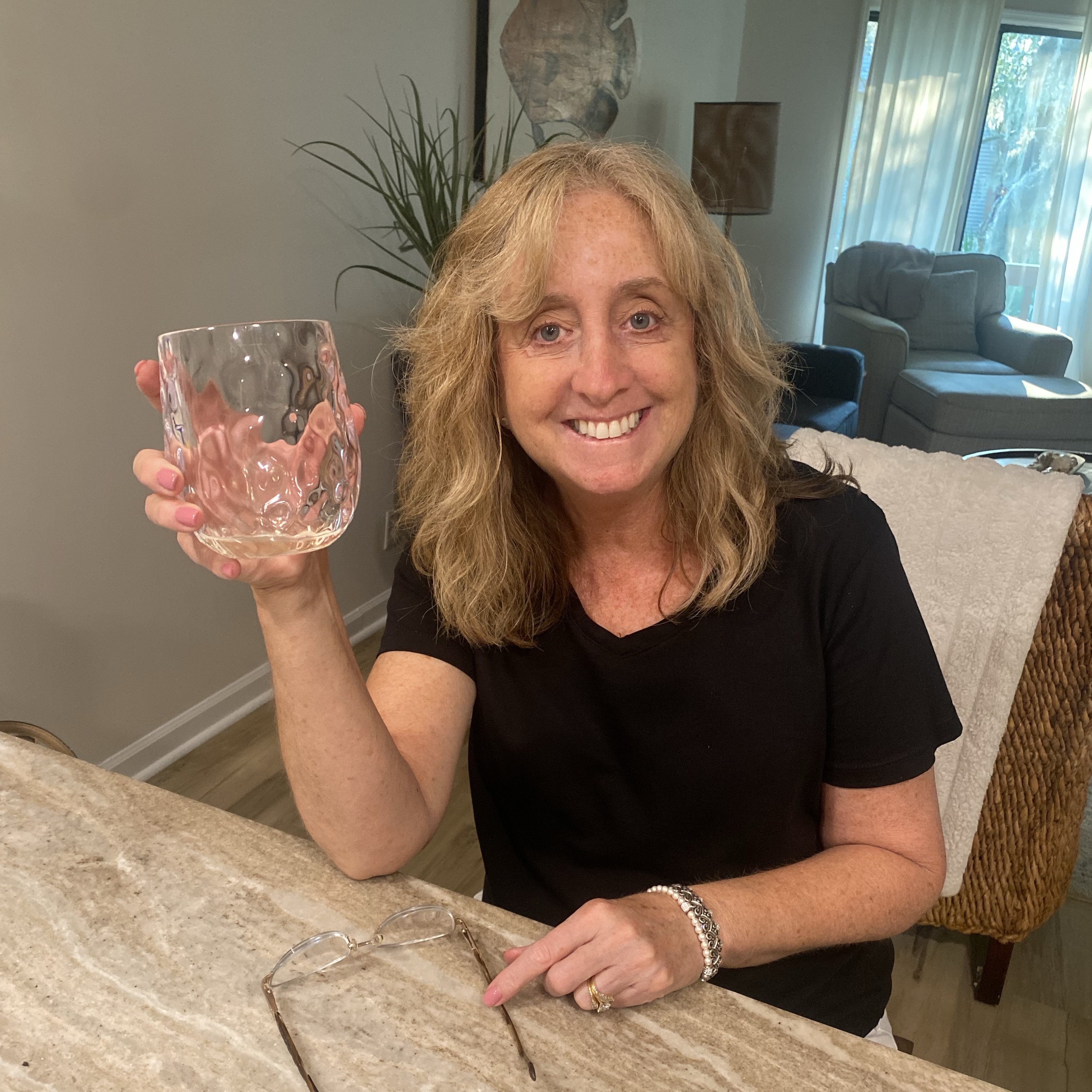
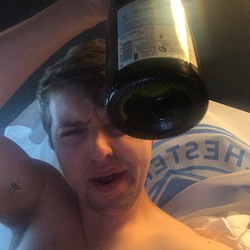
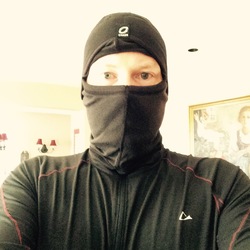






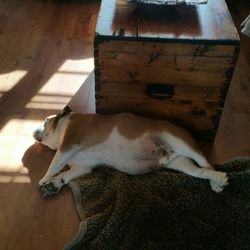


LouAnn Burnett
From TJs DC. Surprisingly good Pinot Noir. — 6 years ago